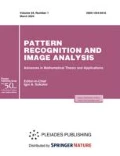Abstract
Ultrasonography images have a high impact in the medical field for faster and accurate diagnosis of the diseases. The analysis and processing of ultrasound images is a tedious task. The proposed work focuses on automatic segmentation and analysis of renal calculi in digital ultrasound kidney images. The developed methodology includes steps such as preprocessing, segmentation and analysis. Preprocessing includes despeckling of input ultrasound images and is performed by using contourlet transform. Preprocessed images undergo automatic segmentation using the level set method. Analysis of the segmented stones is also carried out to obtain metrics such as the number of stones and their sizes. These metrics are essential to decide about the further plan of treatment by urologists and nephrologists. Performance of the developed algorithm is evaluated by the medical experts and also by using the various parameters such as dice similarity coefficient, Jaccard index, specificity, sensitivity, and accuracy.





Similar content being viewed by others
REFERENCES
P. Suetens, Ultrasonic Imaging, Fundamentals of Medical Imaging (Cambridge Univ. Press, 2002), pp. 145–172.
T. Joel and R. Sivakumar, “Despeckling of ultrasound medical images: A survey,” J. Image Graphics 1 (3), 161–166 (2013).
P. S. Hiremath, T. A. Prema, and B. Sharan, “An optimal wavelet filter for despeckling echocardiographic images,” in Proc. Int. Conf. Computational Intelligence and Multimedia Applications, Sivakasi, Tamilnadu, India (13th–15th Dec. 2007) (2007), pp. 245–249.
W. M. Hafizah and E. Supriyanto, “Feature extraction of kidney ultrasound images based on intensity histogram and gray level co-occurrence matrix,” in Proc. IEEE Sixth Asia Modelling Symp. (2012), pp. 115–120.
A. M. Kop and R. Hegadi, “Kidney segmentation from ultrasound images using gradient vector force,” Int. J. Comput. Appl., special issue, 104–109 (2010).
J. Huang, H. Yang, Y. Chen, and L. Tang, “Ultrasound kidney segmentation with a global prior shape,” J. Visual Commun. Image Representation 24, 937–943 (2013).
M. Spiegel, A. H. Dieter, D. Volker, W. Jakob, and H. Joachi, “Segmentation of kidney using a new active shape model generation technique based on non-rigid image registration,” J. Comput. Med. Imaging Graphics 33, 29–39 (2009).
U. Mauli, “Medical image segmentation using genetic algorithms,” IEEE Trans. Inf. Technol. Biomed. 13 (2), 166–173 (2009).
Akkasaligar Prema T. and S. Biradar, “Analysis of polycystic kidney disease in medical ultrasound images,” Int. J. Med. Eng. Inf. 10, 49–64 (2018).
V. Jeyakumar and M. K. Hasmi, “Quantitative analysis of segmentation methods on ultrasound kidney image,” Int. J. Adv. Res. Comput. Commun. Eng. 2 (5), 2319–5940 (2013).
Open Access Biomedical Image Search Engine. https://openi.nlm.nih.gov.
P. S. Hiremath, T. A. Prema, and B. Sharan, “Speckle reducing contourlet transform for medical ultrasound images,” in World Academy of Science, Engineering and Technology—Special Journal Issue (2011), pp. 1217–1224.
T. Agarwal, M. Tiwari, and S. Lamba, “Modified histogram based contrast enhancement using homomorphic filtering for medical images,” in IEEE International Advance Computing Conference (IACC), Gurgaon, New Delhi, India (21st–22nd Feb. 2014) (2014), pp. 964–968.
M. Sussman, P. Smereka, and S. Osher, “A level set approach for computing solutions to incompressible two-phase flow,” J. Comput. Phys. 114 (1), 146–159 (1994).
C. Li, C. Xu, C. Gui, and M. D. Fox, “Level set evolution without re-initialization: A new variational formulation,” IEEE Trans. Imag. Process. 19 (12), 3243–3254 (2010).
J. J. Cerrolaza et al., “Quantification of kidneys from 3D ultrasound in pediatric hydronephrosis,” in IEEE International Symposium (2015), pp. 157–160.
S. Candemir et al., “Lung segmentation in chest radiographs using anatomical atlases with nonrigid registration,” IEEE Trans. Med. Imaging 33 (2), 577–590 (2014).
J. K. Udupa and V. R. LeBlanc, “Methodology for evaluating image segmentation algorithms,” SPIE Med. Imaging 4684 (2002).
A. Gupta and B. Gosain, “A comparison of two algorithms for automated stone detection in clinical B-mode ultrasound images of the abdomen,” J. Clin. Monit. Comput. 24, 341–362 (2010).
ACKNOWLEDGMENTS
The authors would like to thank Dr. Bhushita B. Lakhkar, Assistant Professor, Department of Radiology, BLDEDU’s Shri. B. M. Patil Medical College Hospital and Research Centre, Vijayapur for providing USG image set of the kidney. Authors are also thankful to Dr. Vinay Kundaragi, Nephrologist, BLDEDU’s Shri. B. M. Patil Medical College Hospital and Research Centre, Vijayapur for rendering manual segmentation of images.
Funding
The work is financially supported by Vision Group of Science and Technology (VGST), Government of Karnataka under RGS/F scheme (GRD no. 729/2017-18).
Author information
Authors and Affiliations
Corresponding authors
Ethics declarations
The authors declare that they have no conflicts of interest.
Additional information

Prema T. Akkasaligar has completed her Bachelor of Engineering from Karnataka University Dharawad in the year 1995, ME(CSE) from Gulbarga University, Gulbarga in 1999 and Ph.D. from Gulbarga University, Gulbarga in 2013. Currently, she is working as Professor in the department of Computer Science and Engineering of BLDEA’s V.P. Dr. P.G.H. College of Engineering and Technology, Vijayapur, Karnataka, India. She has more than 35 research publications in reputed and peer reviewed International Journals, conference proceedings and Book chapters. Received state Award for Research Publications (ARP) by VGST, Govt. of Karnataka for the year 2019–2020. She is life member of Computer Society of India (CSI), The Institution of Engineers, India (IEI), Life Member of Indian Society for Technical Education (ISTE) and International Association of Computer Science and Information Technology (IACSIT), Singapore. She has also received research fund from KBITS, Govt. of Karnataka and FOSS scheme of VTU Belagavi, Karnataka. Her areas of interest are Medical image processing and Computer vision.

Sunanda Biradar is a research scholar and working as Assistant Professor in department of Computer Science and Engineering of College of Engineering and Technology, Vijayapur, Karnataka, India. She has completed her Bachelor of Engineering from Visvesvaraya Technological University Belagavi, Karnataka, India in the year 2002. M.Tech. (CSE) from Visvesvaraya Technological University, Belagavi, Karnataka, India in 2009. Her areas of Interest are medical image processing and pattern recognition.
Rights and permissions
About this article
Cite this article
Akkasaligar, P.T., Biradar, S. Automatic Segmentation and Analysis of Renal Calculi in Medical Ultrasound Images. Pattern Recognit. Image Anal. 30, 748–756 (2020). https://doi.org/10.1134/S1054661820040021
Received:
Revised:
Accepted:
Published:
Issue Date:
DOI: https://doi.org/10.1134/S1054661820040021




